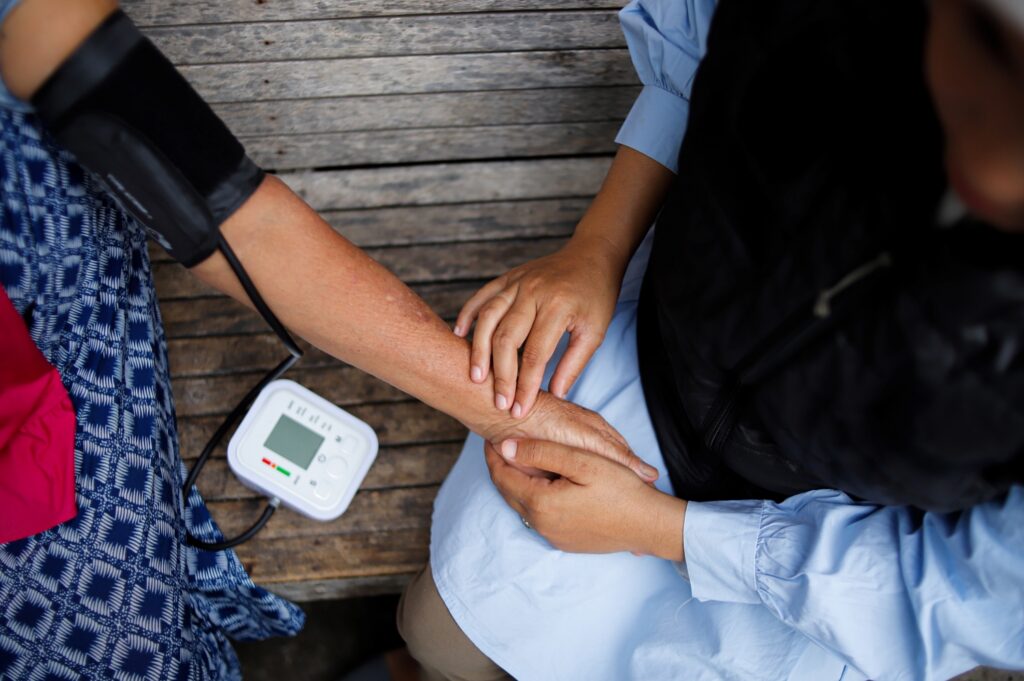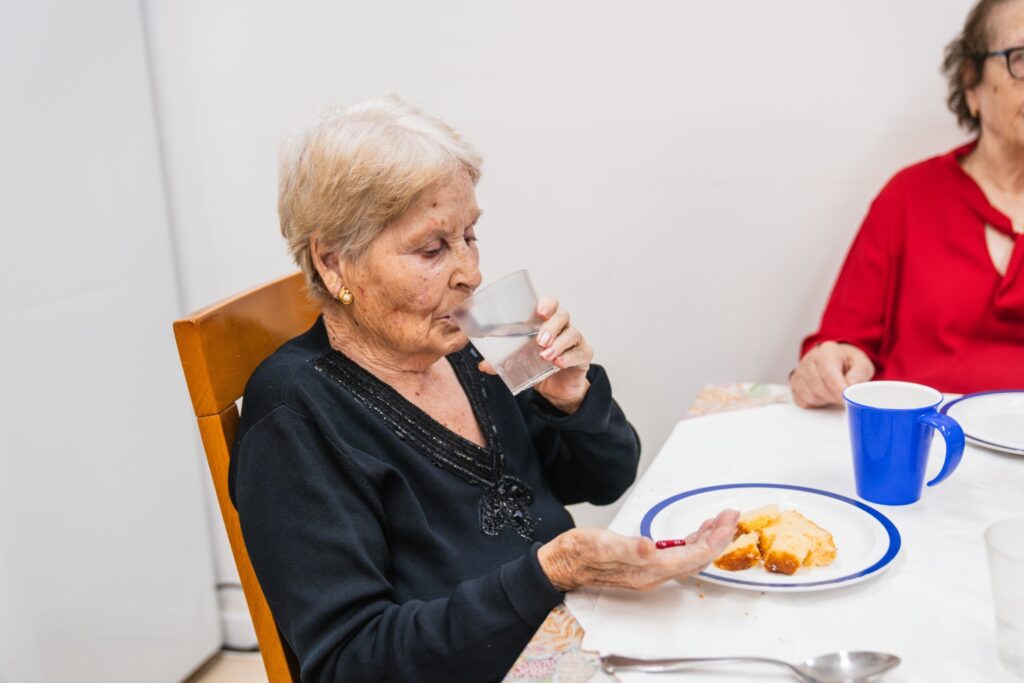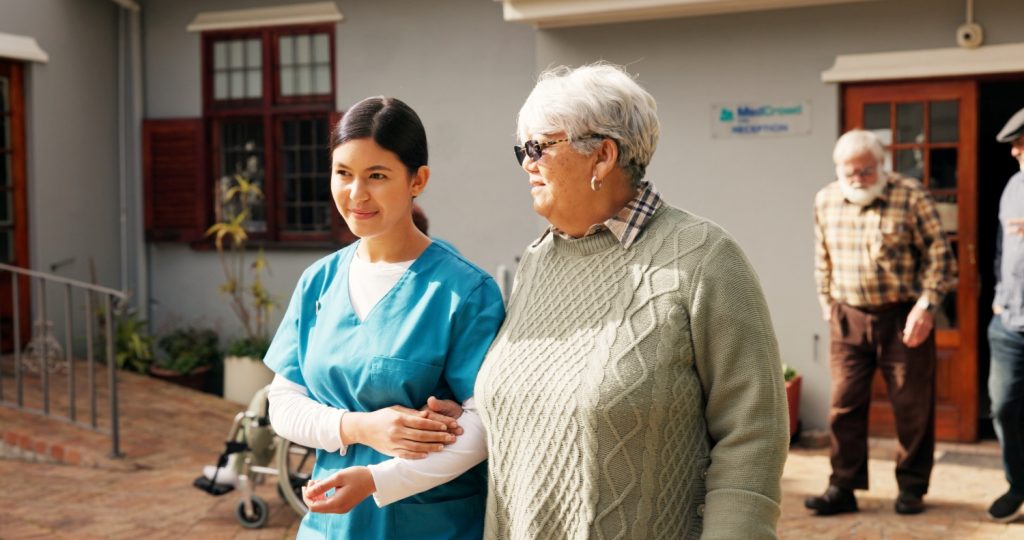Abstract
African American grandparents are an essential part of family stability. Yet too many skip-generation households must navigate care within the constraints of poverty and adverse childhood experiences (ACEs). They are called upon and expected to do more with less. This article discusses the importance of understanding the impact of poverty on essential caregivers in our society, and the reciprocity of care between grandchildren and grandparents. The author calls for rejecting the overreliance on resilience and the philosophy of providing just enough help for these caregivers to make ends meet.
Key Words
Adverse Childhood Experiences, African Americans, grandfamilies, grandparent caregivers, poverty
Poverty among African Americans is a significant opportunity barrier. While there have been successful strides made to reduce poverty, it remains persistent and disproportionally impacts African American skip-generation households. This article addresses the overlapping conditions of being a caregiver and lacking adequate financial resources to address the needs of minor children and the adults who are their caregivers.
It is important to begin this discussion by acknowledging the strengths of grandparent caregiver households. When birth parents cannot carry out their responsibilities, grandparents often step in to provide care for family members. Conversely, when grandparents in skip-generation households need care, their minor grandchildren step in.
This mutual support system fills gaps that structural inequalities have created and fail to adequately address. The unique challenges faced by African American skip-generation households, as highlighted by Peterson (2018), underscore the need for targeted solutions.
This article delves into how poverty continues to be a driving force in these households and elevates awareness of poverty as a persistent structural inequality.
The Strengths of Grandparent (Skip-Generation) Caregivers
Skip-generation households are families where a child lives with at least one grandparent but no parent. Often the terms “grandfamilies” or “grandparent-headed households” are used interchangeably to describe this family type. Generations United uses the terms “Grandfamilies” and “kinship families” interchangeably to refer to families in which grandparents, other adult relatives, or close family friends raise children whose parents are unable to do so. In this article, I also use the terms interchangeably. Whichever term is used, it is important to personalize and particularize the relationship of grandparent-headed households.
Skip-generation families, despite their challenges, have positive and reciprocal benefits for grandchildren and their caregivers. Hayslip et al. (2017) reported that one of the lessons learned over the past decade has been the critical impact of the strengths of grandparents in caregiver roles. Often couched in terms of resilience, the positive outcomes of skip-generation families include greater closeness to grandchildren when compared to non-caregivers (Fuller-Thompson & Minkler, 2001), comparable health outcomes of children (Solomon & Marx, 1995), and family stability (Minkler & Roe, 1996).
Using principles of the Howard University Black Perspective (Howard University School of Social Work, 2024), affirming and acknowledging strengths is important as we navigate the challenges of these unique family structures. According to Hayslip and Kaminski (2005), documentation suggests children raised by grandparents have better school performance, rely less on welfare, have more autonomy in decision-making, and have fewer deviant behaviors than children in single-parent families. It is also noted that custodial grandparents provide emotional support and structure for grandchildren who might otherwise be in a foster care home. Further, grandparents can pass on their memories, wisdom, stories, and family history to grandchildren, who may feel nurtured, safe, and valued in family connections with grandparents (Tang et al., 2015).
When focusing on African Americans, it is important to consider the fluidity of roles (Dariotis et al., 2023) and functional adaptations to the “history of oppression, institutional racism, and the close relationship between economic deprivation of Black families and economic affluence for a large percentage of the nation” (Freeman, 1990, p. 55). These adaptations are often referred to as the strengths perspective and/or resilience. In qualitative studies such as AARP’s on the experience of African-American grandmothers, Crewe and Stowell-Ritter (2013) stated:
“Being a grandparent caregiver in the District of Columbia is not easy. Yet, many grandparents have overcome staggering obstacles and have made a positive difference in the lives of their grandchildren. Reflecting on the unique socio-historical experiences of African Americans and their history of strong family ties, these grandparents are carrying on this positive legacy. Despite the changing times and circumstances surrounding their role as grandparent caregivers, they carry on the family responsibility with great expectations that they will make a difference” (p. 37).
Grandchildren can feel nurtured, safe, and valued in family connections with grandparents.
Numerous high-profile examples celebrate the outcomes of grandchildren who were raised by their grandparents. Simone Biles, the highly celebrated U.S. gymnast, proudly attributes her success to her grandparents and upbringing, which set her up for a better life (Tremaine, 2024). Other well-known personalities such as Barack Obama and Oprah Winfrey had influential grandparents in their lives.
As noted earlier, there is reciprocity of caregiving between grandchildren and grandparents. Some minor grandchildren serve as caregivers for their grandparents who need care due to age and/or disability. Although exact numbers are unknown, AARP and the National Alliance for Caregiving (2020) estimates state that 5.4 million children are caregivers.
This reciprocity of caregiving adds another layer of hardship and results in grandchildren carrying an added burden stacked onto other adverse childhood experiences (ACEs). They often miss milestones in their lives because of this parentification, or adultification, which is defined as role reversal where minor children assume responsibilities generally carried out by adults.
Such children assume instrumental and emotional support roles to ensure family stability. I am reminded of a grandchild I spoke with who said she had to assume these added responsibilities because if her grandmother could no longer care for her, she would have nowhere to go. During the COVID-19 pandemic, an increased number of minor children were estimated to become caregivers (Dariotis et al., 2023). And it is well documented that during COVID social determinants resulted in more African Americans having negative health and life outcomes. These negative outcomes cannot be disconnected from poverty.
Poverty
Hard work is the answer. Pull yourself up by your bootstraps. Tighten your belt. Go to work. Such misinformed solutions to poverty are often heard and passed down, defining a culture of poverty (Small et al., 2010) and penetrating the minds of those not experiencing poverty. Furthermore, when they are used to describe African Americans and other historically oppressed populations, they take on a racist tinge.
However, literature is replete with other narratives painting a more balanced picture that steers away from blaming the victim. Barbara Ehrenreich’s (2001) Nickel and Dimed provides a counter-narrative about poverty and the intertwining of strengths and hardships. America has always grappled with the impact of poverty. The Freedmen’s Bureau attempted to bridge the resource gap for recently freed enslaved African Americans via establishing educational institutions, hospitals, and more. Settlement houses focused on addressing this persistent problem in society. And programs enacted by the New Deal attempted to break the cycle of poverty. The War on Poverty also targeted the tenacious hold of poverty, especially for African Americans.
Throughout our history, numerous programs have attempted to address the needs of people experiencing poverty, including food stamps, public housing, aid to dependent children, and more. However, almost 250 years after America declared independence, poverty has been reduced but has maintained its harmful effects on too many households, especially those of African Americans and other marginalized groups. Some researchers note that poverty is a pressing public health problem (Hughes & Tucker, 2018), as it creates negative outcomes across a child’s life, including into adulthood.
Recent data from the United States Census Bureau (2023) documented that 11.5% of Americans are experiencing poverty. Because of racism and structural inequality, 19.5% of African Americans experience poverty. The Census Bureau also documented that 12.4% of children live in poverty. The Brookings Institute asserts that 1 in 8 children lives with a grandparent, and grandparent caregivers have double the rate of poverty when compared with other older persons (Link et al., 2023).
According to the Government Accountability Office (GAO, 2020), the grandparent caregiver population differs from the general adult population in several ways. For example, grandparent caregivers are disproportionately female and African American. Additionally, although more than half of the grandparent caregiver population is employed, they are more likely to live in poverty and be out of the labor force as compared to the general adult population. The GAO found that poverty is among the various interrelated factors contributing to hardship among skip-generation households, reporting, “Some kin caregivers, particularly in high-poverty areas, may struggle to pay their own bills, and caring for children can increase this financial strain. Some studies in our literature review also found that grandparent caregivers faced challenges generating and shifting income streams later in life and incurred unexpected expenses as a result of taking in their grandchildren” (p. 23).
Poverty cannot be hidden—it is imperative to highlight its effects on grandparents raising grandchildren. As a society, making ends meet and just getting by cannot be the acceptable standard, nor can lauding the resilience of individuals who avoided falling through the cracks.
‘Reducing poverty cannot be the goal; ending it is essential.’
Let’s look at how the United States measures poverty to better understand this issue. The U.S. Census Bureau uses income to determine poverty (Nicholas & Wiseman, 2009). In the 1960s, Mollie Orshansky of the Social Security Administration defined U.S. poverty by identifying families whose incomes did not cover necessities (Fisher, 1992). In 1969, the federal government adopted the concept of a poverty line (Desmond & Western, 2018), a measure based on 3 times the cost of a minimally nutritious diet. In 2011, the U.S. Census Bureau began using a Supplemental Poverty Measure (SPM) that “was better able to identify the effects of federal programs on poverty reduction” (Desmond & Western, 2018, p. 307). The SPM is touted to better measure poverty among older households.
The official poverty measure defines poverty by comparing pretax income to a poverty threshold adjusted by family size, number of children, and household age. The SPM includes income and payroll taxes, tax credits, and other noncash benefits like the Supplemental Nutritional Assistance Program and housing subsidies. Necessary expenses such as child support, childcare, and medical expenses are deducted.
Perhaps the title of two books best address poverty in the United States: Poverty in America (Reef, 2007) and Poverty, by America (Desmond, 2023). The terms “in” and “by” reveal how we conceptualize poverty. Too often, numbers fail to capture its day-to-day aspects.
For example, not cataloged in those numbers is the decision not to purchase needed medication in order to provide clothing for grandchildren, or to use Social Security income to pay higher rent due to space requirements. For African Americans, including an opportunity dimension is critically important due to structural inequalities that have persisted since the enslaved period. This lack of opportunity helps to explain why the poverty rate is higher for African Americans and other minoritized groups. Living below the arbitrary line fails to incorporate the full impact of poverty.
In short, poverty is greater than the sum of its parts—many layers often escape the eyes of the public. While these measures are widely used, it is crucial to think of poverty as more than an economic condition. When considering the lived experiences of skip-generation families, it is essential to consider poverty as multidimensional, incorporating the “denial of opportunities to live a tolerable life” (Desmond & Western, 2018, p. 308). In particular, racism must be considered when addressing African American grandfamilies’ poverty because of the disparate opportunities sanctioned by historical policies.
Childhood Poverty
The Center for American Progress reported almost 11 million children (14.4% of all children) were poor, representing one-third of people living in poverty (Haider, 2021). Moreover, Haider (2021) stated that skip-generation families are more likely to experience poverty than two-parent families, and Black children are twice as likely to live in skip-generation households. The Grand Challenges policy brief addressing extreme economic inequality states explicitly that “childhood poverty results in worse health outcomes, reduced productivity, and higher crime rates, costing the U.S. more than $1 trillion per year” (American Academy of Social Work, 2024, p. 1).
While insightful, it is unlikely that these costs include the emotional burden of caregivers. A particularly relevant construct in thinking about skip-generation households is Adverse Childhood Experiences. ACEs are “defined operationally as childhood events, varying in severity and often chronic, occurring in a child’s family or social environment that cause harm or distress, thereby disrupting the child’s physical or psychological health and development” (Kalmakis & Chandler, 2014, p. 1). Also, Hughes and Tucker (2018) stated, “Research demonstrates the correlation between childhood adversities linked to poverty and negative outcomes in adulthood, indicating that poverty may itself be considered an adverse childhood experience” (p. 124).
According to the Centers for Disease Control (CDC, 2024), ACEs are potentially traumatic events that occur in childhood (from ages 0-17 years).
Examples include:
- Experiencing violence, abuse, or neglect
- Witnessing violence in the home or community Having a family member attempt or die by suicide
- Growing up in a household with:
o Substance use problems
o Mental health problems o Instability due to parental separation
o Instability due to household members being in jail or prison
The CDC (2024) noted that other traumatic factors affecting health and well-being also can be categorized as ACEs. For example, “not having enough food to eat, experiencing homelessness or unstable housing, or experiencing discrimination,” count as ACEs. The CDC also noted that historical and social disparities result in higher rates of ACEs. This again points to the lived experiences of African Americans.
‘They ask for little, and we deliver—we give them too little.’
In a study of low-income urban youth, participants identified a range of experiences falling into the following 10 domains: family relationships, community stressors, personal victimization, economic hardship, peer relationships, discrimination, school, health, child welfare/juvenile justice, and media/technology (Wade et al., 2014, p. 1). Acknowledging these youth-identified examples broadens and intensifies the identification of ACEs and points to areas that are critically important in the lives of grandchildren raised by grandparents. It is important to note the specific identification of economic hardships associated with their lived experience. Terms like economic instability include poverty, and they also offer academic/euphemistic descriptions that fail to capture the experiences. These often-omitted voices speak to the importance of more inclusivity when we examine issues such as poverty. The lived experience must be the centerpiece of understanding ACEs because the voices of individual experiences do not gloss over their realities.
Social Safety Net Programs
Poverty, ACEs, and race intersect to block opportunities and create environments of “getting by” rather than “thriving.” Fortunately, there are safety-net programs grandparents and grandchildren can access to meet their needs. According to the World Bank (2018), safety nets are non-contributory transfer programs generally targeted to the poor or those vulnerable to shocks; including:
- Cash transfers, targeted or not, conditional or not;
- Food or other in-kind distribution;
- Public workfare jobs;
- General price subsidies, e.g., for food or fuel; and
- Fee waivers for essential services such as health or education.
Many safety net programs specifically focus on the needs of skip-generation households. Senior assistance, food stamps, childcare, Medicaid, social security, TANF grants, home improvement grants, college grants, subsidized guardianships, and kinship care are among the resources available to grandparents raising grandchildren (Haney, 2023). Additionally, Growing Family Benefits identifies tax savings opportunities. There are also housing programs designed to support the needs of grandfamilies. These programs are critical and contribute to the safety net. But the 2020 GAO (2020) report “Child Welfare and Aging Programs” stated that the U.S. Department of Health and Human Services can do more to support grandparents and other relatives raising grandchildren. The GAO report made the following two recommendations (p. 50):
- The Assistant Secretary for the Administration for Children and Families (ACF) should establish an ongoing process to proactively share information and best practices with states about programs it administers that are available to serve kin caregivers, especially in states with a relatively large share of grandparent caregivers. This could be achieved, for example, by leveraging regional office staff to provide additional assistance and information sharing, particularly related to kinship navigator programs.
- The Administrator for the Administration for Community Living (ACL) should establish an ongoing process to proactively share information and best practices with states about using National Family Caregiver Support Program (NFCSP) funds to serve older relative caregivers of children, especially in states with a relatively large share of grandparent caregivers. This could be achieved, for example, by leveraging regional office staff to share information from states and area agencies on aging that have successfully used this program to serve older relative caregivers.
Both recommendations were rejected by the ACL primarily because it felt such actions were not needed given current programming initiatives. Its responses noted the changes made to the NFCSP. It also mentioned that the Recognize, Assist, Include, Support, and Engage (RAISE) Family Caregivers Act and the Supporting Grandparents Raising Grandchildren Act also focused on the issues presented. The 2021 RAISE report to Congress included a comprehensive review of the current state of family caregiving and made 26 recommendations for how the federal government, states, tribes, territories, and communities—in partnership with the private sector—could take action (ACL, 2022). While the ACL responses indicate attention to the noted concerns, they also signal a lack of attention needed to fully address the opportunity challenge faced by grandparent caregivers with limited financial resources.
The ACL (2022) identified hundreds of actions federal agencies will take to prioritize improving access to respite care, including family caregivers as part of a person’s care team, strengthening the direct care workforce, and helping to ensure caregivers’ financial security. However, not once does the strategy mention poverty. This omission is significant because it minimizes or euphemizes poverty and its pernicious effects.
There are important questions to raise. Are safety nets adequate? Are too many children still suffering from a lack of resources? Are grandparents relying on minor grandchildren for needed care? Are we doing enough to address ACEs for grandfamilies? Are we addressing the intersections of race and poverty? Are we asking the right people the right questions?
My answer to all of these questions is NO.
While we have made tremendous strides, we have more work to do. Although this article focuses on grandfamilies, it applies to all families trapped by poverty and failing to experience the opportunities rendered to others. It is not enough to rely upon a “bootstrap philosophy.” We must think about strategies that simultaneously intervene, heal, and prevent the ACEs that too often penetrate African American lives. Reducing poverty cannot be the goal; ending it is essential. Numbers represent real people. Let’s collectively turn the page.
Turning the Page
If we know that ACEs predict negative outcomes and block opportunity, we can use this knowledge to focus on policy changes that remove such barriers. While current political debate often highlights the importance of ensuring a thriving middle class, we can advocate for policies that address poverty and its impacts. Individuals experiencing poverty are too often overlooked in our political positions because of the concern that they are unworthy or less important. Some earlier mentioned myths about poverty creep into our thinking and actions. However, as has been said, this is a very important group in our society, and we must address their needs, especially those of grandparents who have stepped in to ensure family members receive the love and care needed to ensure their well-being and access to opportunities.
They ask for little, and we deliver—we give them too little. However, we can do more by aggressively supporting their needs. While it is admirable for a minor grandchild to take on caregiving responsibilities, this can impede their opportunities to thrive.
We need to move beyond researching the problem to elevating the problem to a national platform with new resources. Grandparents and their grandchildren deserve no less. National advocacy groups such as Save the Children, UNICEF, Child Welfare League of America, Alliance for Children’s Rights, National Center for Child Poverty, Children’s Bureau, Black Child Welfare Administrators, and Generations United have historically focused on the needs of children. They need our collective support to bring attention to this crisis that seems to be blunted by our indoctrination about poverty being self-imposed and tendency to blame the victim.
Just as we have begun to identify opioids as a public health crisis, we should do the same for ACEs and their impact on grandfamilies. Living in poverty is a public health problem. Noting the disproportionality and disparity between Black children and youth of color in the child welfare system (Children’s Bureau, 2024), everything in our power must be done to support African American grandparents who raise their grandchildren. As we celebrate successful interventions, let us carefully consider those attempting to “do more with less” and replace this reality with “doing more with more.” Our grandfamilies deserve the maximum versus the minimum standard of care. For African Americans, getting by is not enough.
Sandra Edmonds Crewe, MSW, PhD, is dean emerita and professor of Social Work at Howard University, a 40-year member of the Academy of Certified Social Workers, and a long-standing trustee for the Maryland Affordable Housing Trust. She serves as the Sojourner Truth Social & Racial Justice Visiting Professor at Rutgers University.
References
AARP & National Alliance for Caregiving. (2020). Caregiving in the United States 2020. https://www.aarp.org/pri/topics/ltss/family-caregiving/caregiving-in-the-united-states/
Administration for Community Living (ACL). (2022). National strategy to support family caregivers. https://acl.gov/sites/default/files/RAISE_SGRG/NatlStrategyToSupportFamilyCaregivers-2.pdf
American Academy of Social Work. (2024). Meeting the grand challenge to reduce extreme economic inequality. https://grandchallengesforsocialwork.org/reduce-extreme-economic-inequality/
Centers for Disease Control and Prevention. (2024, August 30). Adverse childhood experiences. United States Department of Health and Human Services. https://www.cdc.gov/aces/about/index.html
Children’s Bureau. (2024, June 27). Addressing disproportionality, disparity, and equity throughout child welfare. United States Department of Health and Human Services, Administration for Children & Families. https://www.acf.hhs.gov/cb/focus-areas/equity
Crewe, S., & Stowell-Ritter, A. (2013). Grandparents raising grandchildren in the District of Columbia: Focus group report. AARP.
Dariotis, J., Chen, F., Park, Y., Nowak, M., French, K., & Codamon, A. (2023, June). Parentification vulnerability, reactivity, resilience, and thriving: A mixed methods systematic literature review. International Journal of Environmental Research and Public Health, 20(13), 6197. https://doi.org/10.3390/ijerph20136197
Desmond, M. (2023). Poverty, by America. Crown.
Desmond, M., & Western, B. (2018). Poverty in America: New directions and debates. Annual Review of Sociology, 44, 305-318. https://doi.org/10.1146/annurev-soc-060116-053411
Ehrenreich, B. (2001). Nickel and dimed. Picador.
Fisher, G. M. (1992). The Development and History of the Poverty Thresholds. Social Security Administration. https://www.ssa.gov/history/fisheronpoverty.html
Freeman, E. (1990). The Black family’s life cycle: Operationalizing a strengths perspective. In S. Logan, M. Freeman, & R. McRoy (Eds.), Social work practice with black families: A culturally specific perspective (pp. 55-72). Longman Publishing Group.
Fuller-Thompson, E., & Minkler, M. (2001). American grandparents providing extensive child care to their grandchildren: prevalence and profile. The Gerontologist, 41(2), 201-9. https://doi.org/10.1093/geront/41.2.201
Government Accountability Office. (2020). Child welfare and aging programs [GAO-20-434]. https://www.gao.gov/products/gao-20-434
Haider, A. (2021). The basic facts about poverty. Center for American Progress. https://www.americanprogress.org/wp-content/uploads/sites/2/2021/01/ChildPovertyPrimer-report1.pdf
Haney, K. (2023, March 23). Benefits available for grandparents raising grandchildren. Growing Family Benefits. https://www.growingfamilybenefits.com/?s=grandparents
Hayslip, B. J., & Kaminski, P. L. (2005). Grandparents raising their grandchildren. Marriage & Family Review, 37(1-2), 147-169. https://doi.org/10.1300/J002v37n01_10
Hayslip, B., Fruhauf, C. A., & Dolbin-MacNab, M. L. (2017). Grandparents raising grandchildren: What have we learned over the past decade? The Gerontologist, 57(6), 1196-1196. https://academic.oup.com/gerontologist/article/59/3/e152/3897134
Howard University School of Social Work. (2024). The Black perspective: Our guiding philosophy. https://socialwork.howard.edu/about-us/black-perspective
Hughes, M., & Tucker, W. (2018). Poverty as an adverse childhood experience. North Carolina Medical Journal, 79(2), 124-126. https://doi.org/10.18043/ncm.79.2.124
Kalmakis, K. A., & Chandler, G. E. (2014). Adverse childhood experiences: Towards a clear conceptual meaning. Journal of Advanced Nursing, 70(7), 1489-1501. http://dx.doi.org/10.1111/jan.12329
Link, E., Watson, T., & Kalkat, S. (2023). More kids are living with their grandparents. Can safety net policy keep up? Brookings. https://www.brookings.edu/articles/more-kids-are-living-with-their-grandparents-can-safety-net-policy-keep-up/
Minkler, M., & Roe, K. (1996, Spring). Grandparents as surrogate parents. Generations Journal, 20(1), 34-38. https://www.jstor.org/stable/44877328
Nicholas, J., & Wiseman, M. (2009). Elderly poverty and Supplemental Security income. Social Security Bulletin, 69(1), 45. https://ncbi.nlm.nih.gov/pubmed/19579530
Peterson, T. (2018). Grandparents raising grandchildren in the African American community. Generations Journal, 42(3), 30-36. https://www.jstor.org/stable/26591699
Reef, C. (2007). Poverty in America. Infobase Publishing.
Small, M., Harding, D., & Lamont, M. (2010). Reconsidering culture and poverty. Annals of the American Academy of Political and Social Science, 629(1), 6-27. https://doi.org/10.1177/0002716210362077
Solomon, J. C., & Marx, J. (1995). “To grandmother’s house we go”: Health and school adjustment of children raised solely by grandparents. The Gerontologist, 35(3), 386-394. https://academic.oup.com/gerontologist/article/35/3/386/593675
Tang, F., Jang, H., & Copeland, V. C. (2015). Challenges and resilience in African American grandparents raising grandchildren: A review of the literature with practice implications. GrandFamilies: The Contemporary Journal of Research, Practice and Policy, 2(2). https://scholarworks.wmich.edu/grandfamilies/vol2/iss2/2
Tremaine, J. (2024, Aug. 5). All about Simone Biles’ parents, Ronald and Nellie Biles. People Magazine. https://people.com/sports/all-about-ronald-nellie-biles-simone-biles-parents/
U. S. Census Bureau. (2023). Poverty in the United States: 2022. https://www.census.gov/library/publications/2023/demo/p60-280.html
Wade, R. J., Shea, J., Rubin, D., & Wood, J. (2014). Adverse childhood experiences of low income youth. Pediatrics, 134(1), e13-e20. https://doi.org/10.1542/peds.2013-2475
World Bank (2018). The state of social safety nets 2018. https://www.worldbank.org/en/topic/socialprotectionandjobs/publication/the-state-of-social-safety-nets-2018













